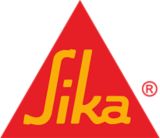2016
Holmestrand, Norge
PROJECT HOLMESTRANDSPORTEN
SikaHyflex-250 Facade, Sika PE backer rod, primer, insulation and Sikaplan WP 1100-20HL
The demand for reduced travel time, increased capacity and a reliable train solution which combines the cities along the Vestfold railway were important arguments for constructing a double track railway. In a time when the globe is facing environmental challenges, transport of people and goods by mean of railways contributes to the reduction of greenhouse gas emissions, it was decided by the authorities to upgrade the existing railway line. The need for modernization of the railway had been going on since 1993.
IN AUGUST 2010 THE WORK with the line Holm - Nykirke started. For the first time a railway designed for a speed of 250 km/hour was going to be constructed in Norway. The distance from Holm to Nykirke is split into 4 contracts, which all together is 14,2 km. Railway tunnels represent entire 12,3 km with a blasting profile of 133 m2. The total cost (2015) is amounted to 6,3 billion nkr. and is planned to be finished in 2016.
- UHN-01 Sjøskog is a 4 000 m tunnel contract including escape tunnels. Performed by Contractor Leonard Nilsen og Sønner AS
- UHN-03 Holm contract constitutes 1800 m tunnel. Performed by Contractor Skanska AS.
- UHN-04 Station contract consists of 2370 m tunnel and a station hall of 866 m with escape tunnels. This contract was combined with UHN-06 Fibo with a main tunnel of 1930 m. Performed by Contractor Skanska AS.
- UHN-07 Snekkestad, railway and track contract. Involves the construction of a 2000 m. long main tunnel, access and escape tunnel. Performed by Contractor Marti IAV DA.
PROJECT HOLMESTRANDSPORTEN
REQUIREMENTS
The design of the tunnels is constructed with 2 m wide concrete elements as the inner lining. Behind the elements the frost and water protection is executed with sprayed concrete and a loosely fixed membrane (the umbrella method). All the joints between the concrete elements were specified to be sealed with a fire resistant sealing system, classified EI 120. Besides, the project demanded priority to products with an environmental profile. Low emitting products were given preference. In comparison with a duplex sealant system, the National Rail Authorities in this type of construction design had to rely on only a fire resistant unilateral sealing system. The design of the joint was different from ordinary joint profile (see figure). The sealant had also to be retracted compared to the concrete surface due to heavy wind velocity in the tunnel.
In the entrances of the tunnels the system was designed with a 2 mm PVC membrane fixed to the sprayed concrete and then fully casted with concrete. The open cut constructions were specified protected with a 2 mm PVC membrane.
Weighting factors for products and solutions in the design and construction of the tunnels were the following:
- Safety and operation
- Fire
- Suitability for use
- Easy to maintain
- Life expectancy and life cycle cost
PROJECT DESCRIPTION
The demand for reduced travel time, increased capacity and a reliable train solution which combines the cities along the Vestfold railway were important arguments for constructing a double track railway. In a time when the globe is facing environmental challenges, transport of people and goods by mean of railways contributes to the reduction of greenhouse gas emissions, it was decided by the authorities to upgrade the existing railway line. The need for modernization of the railway had been going on since 1993.
Sika solutions
Fire rated solution for unilateral joints: SikaHyflex-250 Facade, Sika PE backer rod, primer and insulation
Sprayed concrete: Sigunit L63 AF, alkali free accelerator
Membrane for the portals: Sikaplan WP 1100-20HL
KEY FACTS
Project owner: Jernbaneverket AS
Project Management: Jernbaneverket AS
Sub-contractor membranes: Borge Miljø AS
Sub-contractor joint sealing: Øyan & Schie AS Helper/Allfug AS
Construction start-up: 2010
Completion: 2016
Costs: NOK 6,3 billion (2015)

